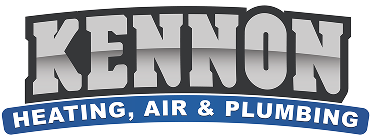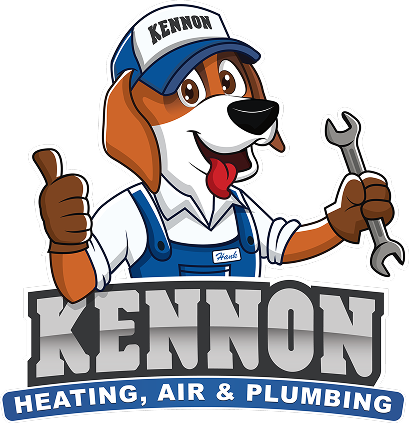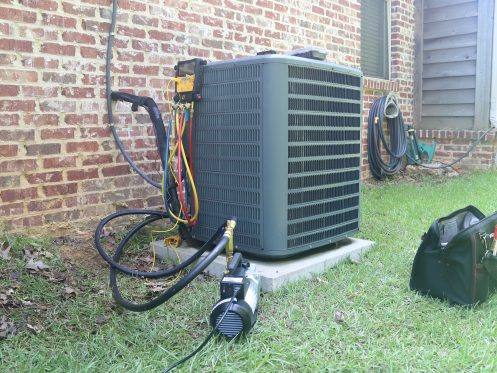Your calendar may have filled up quickly, or maybe cooler days tricked you into putting it off. Either way, if you haven’t gotten your HVAC tune-up yet, you’re not out of time. Late spring still gives you a window to catch problems before the heat locks in.
Why Skipping a Spring Tune-Up Leaves You Guessing
When your HVAC runs daily, it doesn’t give much warning before something slips. You might feel the air cool, but that doesn’t mean everything inside the unit is steady. Coils collect dust even if your filter looks clean. Wiring moves from vibration and age. Motors pull slightly more power as resistance builds. Those details don’t scream for attention until they build into noise, short cycles, or uneven cooling.
A tune-up pulls the cover off and reveals how the system is performing behind the scenes. Technicians verify airflow with actual measurements, not guesswork. They track voltage across connections, clean the condenser fins, and read refrigerant levels. If anything runs hot or low, you get a fix before it becomes a failure. You can’t feel a coil underperforming, but you can see the results on your energy bill or in rooms that never quite hit the target temperature.
Humidity and Airflow Matter
If your system cools without clearing the moisture, the room never feels right. The air might read 72 degrees Fahrenheit, but it sticks to your skin like a humid afternoon. That problem comes from short cycles or a clogged evaporator coil. The air passes through, but it doesn’t stay long enough to dry out. You end up with damp air that carries allergens and leaves rooms feeling clammy.
A technician can test airflow and adjust fan speeds to ensure that every pass through the system performs its intended function. That might mean a new capacitor or a cleaned-up blower assembly. Sometimes, it just takes tightening a loose belt or adjusting a damper that’s stuck halfway closed. A tune-up resets the air inside your house so that your comfort depends less on the thermostat number and more on how evenly the system performs.
Performance Testing Reveals Problems Early
A working system isn’t always a healthy one. It might turn on and cool the air, but performance drifts slowly when you’re not watching. A tune-up tests what you can’t hear or see. It reads pressure, temperature split, voltage, and fan output.
When those numbers shift outside expected ranges, the technician pinpoints what’s off. Maybe it’s a clogged drain line. Maybe a relay clicks slower than it should. Catching these problems early gives you options. You can repair, replace, or plan around the issue before it affects the whole system.
Filter Changes Don’t Count as Maintenance
Replacing your air filter helps, but it’s not the same as a tune-up. Filters trap debris and protect internal parts, but they don’t clean coils, test electrical load, or adjust sensor readings. Skipping the rest of the system means you’re only handling part of the problem. The buildup continues on the other side, past the filter’s reach.
A technician cleans where your hands can’t go. They vacuum the interior cabinet, check drain pans, and inspect duct transitions. Every part plays a role in system health, and even a small buildup adds friction to airflow. Think of a filter change as a surface-level clean. The tune-up goes deeper and checks how the whole system fits together.
Neglected Wear Becomes Summer Downtime
Failures often start without a sound or a symptom. A capacitor doesn’t throw sparks. It just drops power until the motor can’t start. A sensor doesn’t flash a warning. It just reads low until your thermostat loses track of real conditions. These kinds of breakdowns don’t always give you a heads-up. They fail when demand spikes and your system can’t handle the load.
A tune-up reviews these pieces. The technician replaces anything trending out of range, not just the ones that have already failed. That step saves you from spending a July afternoon calling around for emergency help. If your goal is a quiet, stable summer, that work starts while the days are still mild. Spring maintenance is the difference between reacting and planning.
Energy Savings Start With System Precision
Your HVAC system performs best when each part works in sync, but even small imbalances can throw it off course. A slow fan motor or an uncalibrated thermostat may not seem like major issues, but they disrupt the system’s cycling process. It could start too often or run longer than necessary, constantly trying to meet a target it no longer reads accurately. That struggle burns more energy and wears out internal parts. You may not catch the shift right away, but you’ll feel it in the room and see it on the bill.
A spring tune-up provides technicians with the opportunity to address those details. They clean coils, check refrigerant levels, adjust blower speed, and test voltage output. These aren’t surface fixes. They recalibrate the system, lowering the workload each part has to carry. That makes your cooling more stable and less expensive.
HVAC system tune-ups create a running history of how your system behaves from year to year. If the numbers start to drift, the technician knows what changed. One odd reading doesn’t tell much, but two or three years of the same trend suggest a deeper issue. This pattern recognition gives you a chance to plan, repair early, and avoid mid-season breakdowns. Every visit adds context, making your system easier to understand and maintain.
Even New Systems Benefit From a Tune-Up
Even new systems need early tune-ups. Manufacturers often require documented maintenance to keep the warranty active, and a skipped visit could leave you uncovered if something fails. A spring check also gives you a clear baseline for how your system performs while it’s still running at full strength. That data makes it easier to spot future changes, like a fan slowing down or a coil losing efficiency. By starting with a tuned and recorded benchmark, you’re not guessing later. You’re tracking real shifts, backed by numbers and service notes.
Spring Servicing Avoids Peak Season Delays
Every summer, there’s a point when appointment books fill with calls from homes that lost cooling in the middle of a heat wave. That’s when the wait begins. If you’ve already tuned-up your system in spring, you avoid that mess.
Spring schedules are more flexible. Technicians can spend more time running full diagnostics. You’re not stuck with the last appointment of the day. More breathing room means better attention and fewer distractions. If something needs to be ordered or adjusted, you’ve got time to handle it on your terms. Repairs made before summer stress hits tend to last longer because they happen in stable conditions, not rushed emergencies.
Call for an HVAC Tune-Up Today
Our team at Kennon Heating, Air & Plumbing in Cumming, GA offers HVAC services, duct cleaning, indoor air quality (IAQ) upgrades, and energy-efficient system replacements. Book your tune-up with Kennon Heating, Air & Plumbing today.



